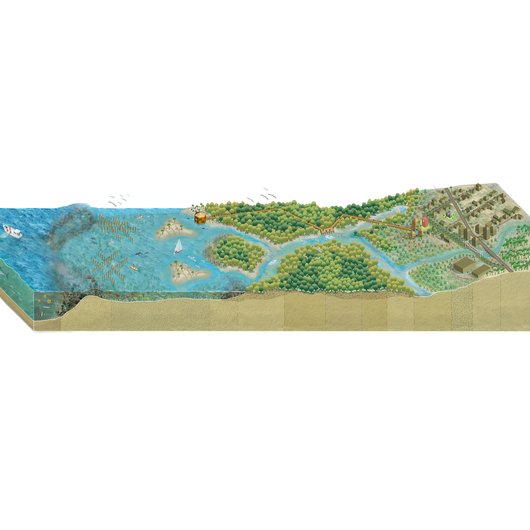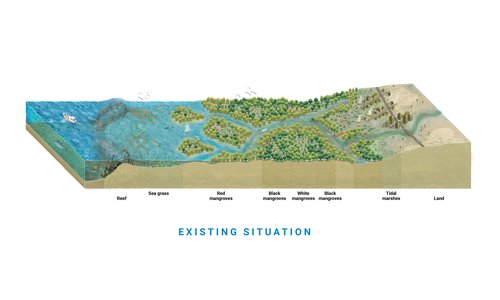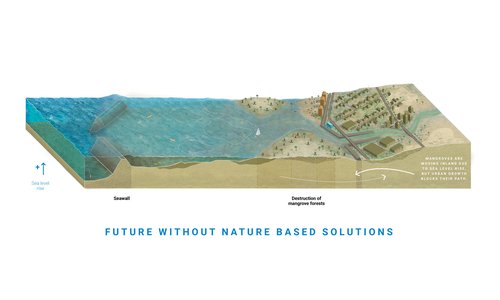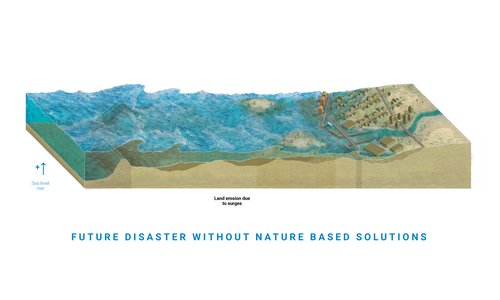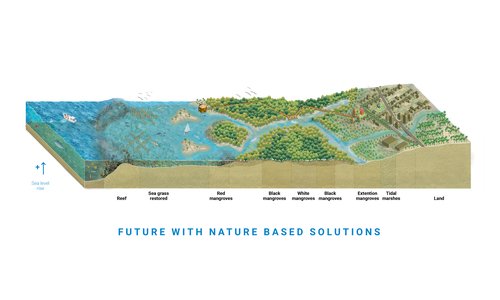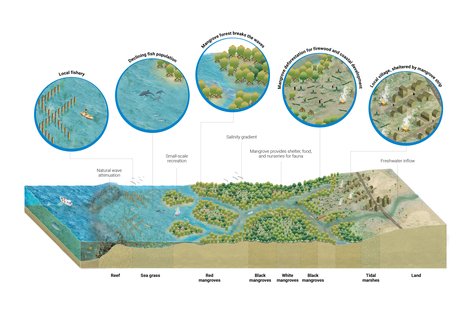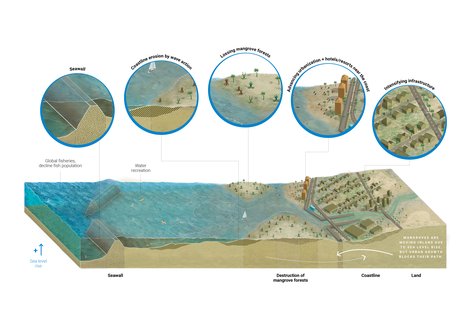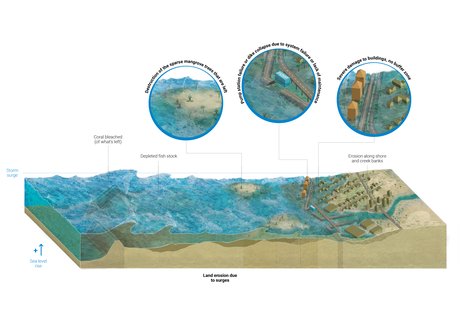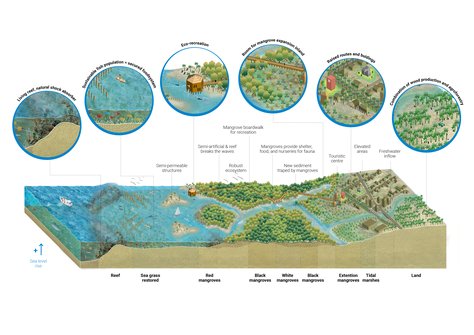Existing Situation
What we see today:
The first visual represents a typical mangrove forest system as it exists today. A variety of natural elements are still in place, but signs of degradation are already visible.
- Healthy zones such as coral reefs, sea grass beds, and dense mangrove belts provide essential ecosystem services like wave attenuation and nurseries for fish.
- Local communities benefit from small-scale fisheries and natural protection against storms and erosion.
- However, threats like declining fish populations, mangrove deforestation, and coastal development are beginning to compromise the ecosystem.
- The balance between nature and human activity is fragile and increasingly at risk.
